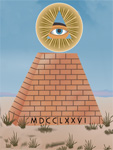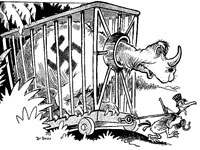There are only long answers to any questions about taxation in American history, no matter how short the questions. Here we have a short question, and only room for a short answer. So let’s make a start.
The “exceedingly high” part of this question most likely refers to the federal income tax’s “confiscatory” top rates coming out of World War II, which the Eisenhower Administration left in place into the 1960s. During the war, the top “marginal rate” was 94%, but 94% of what? Then as now, income tax rates moved up at distinct break points. In this made-up example, consider a 15% rate up to $25,000, 21% from $25,000 to $50,000, and 25% over $50,000. Those making $50,001 or more won’t pay a quarter of their total income, but rather 15% of the first $25,000, 21% of the next $25,000, and 25% of everything above $50K. That’s why the system is called progressive - the percentage rate progresses upward with income, but the higher percentage applies only to new (marginal) income above each break point. In 1944-45, “the most progressive tax years in U.S. history,” the 94% rate applied to any income above $200,000 ($2.4 million in 2009 dollars, given inflation).
In World War Two, tax law revisions increased the numbers of “those paying some income taxes” from 7% of the U.S. population (1940) to 64% by 1944.
Very few individuals encountered this top rate, however. The actual proportion of earnings citizens paid as income taxes in 1945 was far lower: for the poorest 20% of Americans, 1.7%; for the next 20%, 6.2%; for the middle quintile, 8.9%, for the upper-middle 20%, 10%; and for the wealthiest quintile, 20.7%. Tax rates have fallen since then: the current top level is 35% of income above $357,000, or $30,000 in 1945 dollars. Then the median family income was $2,379 per year. Brackets also have simplified (24 in the 1950s, just six today), yet the federal government takes in far more revenue than 60 years ago and citizens complain hugely about being over-taxed. What has happened?
Three things, basically. First in World War II, tax law revisions increased the numbers of “those paying some income taxes” from 7% of the U.S. population (1940) to 64% by 1944, vastly broadening the tax base and increasing the total intake. Even so by 1975, the same five quintiles, bottom to top, were paying respectively just 0.6%, 4.7%, 8.8%, 11.2%, and 17.8% of their adjusted gross incomes to the IRS. Note that for four of the five groups, this percentage was lower than in 1945, with several waves of tax cuts following in recent decades. Second, other federal taxes increased substantially. In 1952, social security tax rates stood at 1.5% of pay, employers and workers each putting in this sum. The self-employed paid 2.25% of net income. These figures increased by 1970 to 4.2% each for workers and enterprises (6.2% for self-employeds), and to 6.2% each (and 12.4% for self-employeds) by 2010. Thus the share of earned income taxed increased fourfold or more since the early 1950s. As well, Medicare and Medicaid taxes appeared in the late 1960s and rose from half a percent then to nearly 1.5% now. Thus many Americans currently pay more for these retirement and medical coverages than they do in regular income taxes. But the biggest blow may have been the evidently sharp increase in state and local taxes since the 1970s. Rising from a national average of $800 per capita (multiply by the number of your family members) in 1977, these taxes neared $4,300 per person by 2008, rising 44% faster than inflation. The principal mechanisms employed by non-federal governments were wage and income taxes, property taxes, and a vast range of fees, all of which went to support public safety (police, fire), health, basic and higher education, roads and other infrastructures, courts, prisons, and the regulation of everyday life (deeds, inspections, voter registrations, licensing, et al.)
Despite these surges, Americans remain among the least-taxed citizens of advanced industrial nations.
A few years ago, one critic of the recent Bush Administration asserted that: “By the time Clinton left office [January 2001], Federal income taxes as a percentage of income for the typical American family were lower than they had been at any time since 1966.” Perhaps so, but the typical total tax load, taking all outflows from households into account, had risen. Americans' taste for and justification of expanded government services had grown, as had their increasing resentment at the expense. From these tensions emerged “today's loud events,” in which polarized denunciations seem to be pushing aside pragmatic policy making. Two final notes: despite these surges, Americans remain among the least-taxed citizens of advanced industrial nations, with 28% of gross domestic product taken for taxes, vs. an average of 36% for the 38 member countries of the Organization for Economic Cooperation and Development, while, since 1942, the U.S. has spent far more than any other nation on military and national security needs. Second, none of the above discussion has touched the issue of business taxes, which are included in the U.S. vs. OECD assessment, but rarely examined historically, especially with attention to their state and local components.

